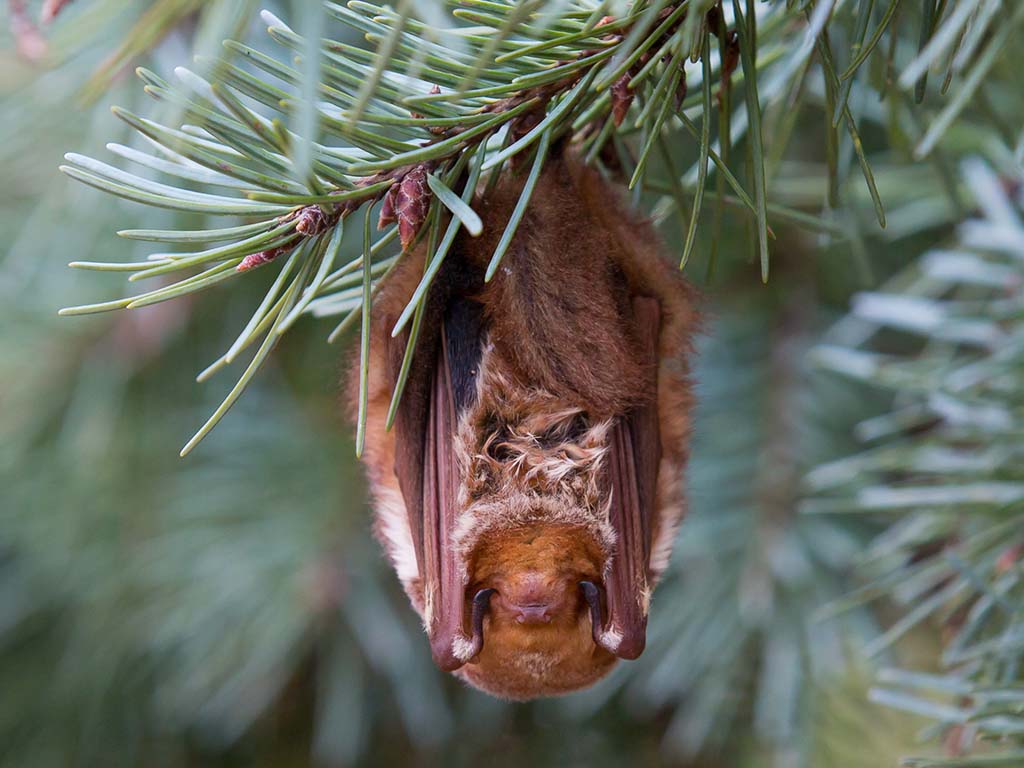🦇 Exploring the Diverse Bats of Maryland 🦇
Maryland may be one of the smallest states in the United States, but when it comes to its bat population, it’s home to a surprising diversity of species. These fascinating creatures play a vital role in the state’s ecosystem, helping control insect populations and contributing to its ecological balance. In this post, we’ll take a closer look at the various types of bats that call Maryland their home.
Tree Bats:
-
Eastern Red Bat (Lasiurus borealis): With its striking, rusty-red fur, the Eastern Red Bat is a common sight in Maryland’s forests, especially during the warm months. They are known for their habit of roosting in trees and shrubs, resembling fallen leaves, during the day.
-
Hoary Bat (Lasiurus cinereus): The Hoary Bat is one of the largest bat species in Maryland, characterized by its distinctive frosted or “hoary” appearance. They are known for their solitary habits and can often be seen hunting insects high in the night sky.
-
Silver-haired Bat (Lasionycterus noctivagans): This bat species has silky, silver-gray fur and is known for its solitary lifestyle. They prefer to roost in trees and are highly skilled at catching moths on the wing.
-
Evening Bat (Nycticeius humeralis): The Evening Bat is named for its early evening activity. These bats often form maternity colonies in trees or buildings and are known for their relatively small size.
Cave Bats:
-
Eastern Small-footed Bat (Myotis leibii): These small bats are often found in caves and rocky crevices in Maryland. They have distinctive small feet and are known for their slow, fluttery flight.
-
Little Brown Bat (Myotis lucifugus): The Little Brown Bat is one of the most common bat species in North America and is found throughout Maryland. Unfortunately, they have been severely impacted by White-Nose Syndrome, a deadly fungal disease.
-
Northern Long-eared Bat (Myotis septentrionalis): As their name suggests, these bats have long ears and can be found in caves, mines, and forests. They are listed as a federally threatened species.
-
Indiana Bat (Myotis sodalis): Indiana Bats are a federally endangered species and are also affected by White-Nose Syndrome. They are known for their distinctive pink nose and preference for forests.
-
Tri-colored Bat (Perimyotis subflavus): These small bats are often found in caves and mines, where they roost in colonies. Their fur is tri-colored, with dark roots, yellowish midsections, and grayish tips.
-
Big Brown Bat (Eptesicus fuscus): Big Brown Bats are adaptable and can be found in a variety of habitats, including forests and urban areas. They are larger in size compared to many other bat species in Maryland.
Unconfirmed Records:
There are unconfirmed records of the Seminole Bat (Lasiurus seminolus) and Southeastern Bat (Myotis austroriparius) in Maryland. These bats may occasionally be spotted, but more research is needed to confirm their presence in the state.
Bats are not only essential for maintaining ecological balance but are also valuable for insect control, making them an integral part of Maryland’s natural heritage. Remember that bats are protected by law in many areas, so it’s important to respect their habitats and not disturb them. Maryland’s diverse bat species contribute to the state’s biodiversity and are a testament to the importance of preserving our natural world. 🌿🦇 #MarylandBats #WildlifeConservation
